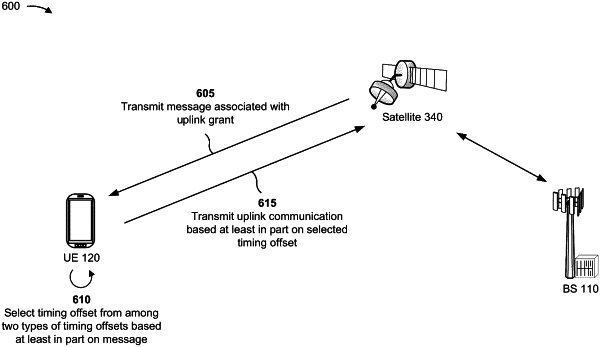| CPC H04W 56/004 (2013.01) [H04L 1/08 (2013.01); H04L 1/1812 (2013.01); H04W 72/23 (2023.01)] | 28 Claims |

|
1. A user equipment (UE) for wireless communication, comprising:
a memory; and
one or more processors, coupled to the memory, configured to:
receive, from a non-terrestrial network (NTN) entity, a message that is associated with an uplink grant;
select, based at least in part on the message, either a cell-specific offset or an updated offset that is indicated after initial access, as a timing offset that accounts for a propagation delay between a base station of the NTN and the UE, wherein the cell-specific timing offset is included in a previously received message, wherein the message includes downlink control information (DCI) that is scrambled with a radio network temporary identifier (RNTI), and wherein the one or more processors are configured to select the timing offset based at least in part on a type of the RNTI; and
transmit, to the NTN entity, an uplink communication using the timing offset.
|